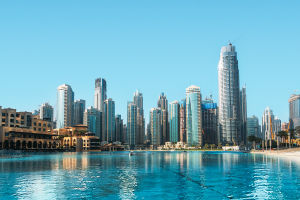Welcome Lykkers! Cities around the world are often identified by their unique architectural landscapes, which are shaped by characteristic buildings that not only define their skyline but also embody cultural, historical, and economic narratives.
The relationship between these buildings and the city image is symbiotic, with iconic structures enhancing a city’s identity while reflecting its aspirations and heritage.
Defining Characteristic Buildings
Characteristic buildings are structures that stand out due to their design, purpose, or historical significance. These buildings are often architecturally innovative, culturally meaningful, or symbolically powerful, making them memorable landmarks. Examples include the Eiffel Tower in Paris, the Burj Khalifa in Dubai, and the Sydney Opera House. Such buildings transcend mere functionality to become emblems of their cities, representing their unique identity and attracting global attention.
Contribution to City Image
A city’s image is shaped by how it is perceived both by its residents and outsiders. Characteristic buildings play a pivotal role in this perception by acting as visual anchors. For example, New York City’s skyline, dominated by the Empire State Building and One World Trade Center, conveys a sense of ambition and resilience. Similarly, the historic charm of Florence is embodied in structures like the Florence Cathedral and the Ponte Vecchio, which highlight its Renaissance legacy.
These buildings often become the face of the city in promotional materials, postcards, and social media. They serve as tangible representations of intangible values such as innovation, tradition, or openness. Furthermore, they influence the city’s economic image by attracting tourism and investment. The Taj Mahal in India, for instance, is not just a UNESCO World Heritage Site but also a key driver of tourism in the region.
Cultural and Historical Significance
Characteristic buildings are deeply intertwined with a city’s history and culture. Ancient structures like the Great Wall of China or the Colosseum in Rome tell stories of past civilizations, wars, and triumphs. They act as physical records of a city’s evolution, offering a sense of continuity amidst rapid urbanization.
Modern iconic buildings, on the other hand, reflect contemporary values and technological advancements. For instance, the Louvre Pyramid in Paris merges historical context with modernist architecture, symbolizing the city’s ability to innovate while respecting its past. By bridging the gap between tradition and modernity, such buildings enrich the city’s narrative.
Urban Identity and Public Spaces
Beyond their visual appeal, characteristic buildings contribute to urban identity by fostering community pride and engagement. Public spaces around these structures often become hubs of activity, where residents and visitors interact, thus reinforcing the city’s social fabric. For example, the area around the Gateway of India in Mumbai or Times Square in New York is as vibrant and significant as the structures themselves.
Moreover, these buildings often inspire local architecture and urban planning, influencing the aesthetic and functional development of the surrounding areas. They serve as benchmarks, encouraging architects and planners to think creatively and sustainably.
Challenges and Future Considerations
While characteristic buildings are vital to a city’s image, they also present challenges. Maintaining and preserving historical landmarks can be costly, and integrating modern structures into established urban landscapes without disrupting their character requires careful planning. Additionally, over-reliance on a few iconic buildings for branding may overshadow other aspects of a city’s identity, such as its natural environment, cultural diversity, or local craftsmanship.
Looking ahead, cities must prioritize sustainability and inclusivity in their architectural endeavors. Future characteristic buildings should not only be visually striking but also environmentally responsible and accessible to all. Incorporating green technologies and ensuring that these structures serve the community can enhance their significance in shaping a city’s image.
Characteristic buildings are more than architectural marvels; they are symbols of identity, culture, and progress. They define the essence of a city and contribute to its global image, fostering economic growth and cultural pride. As cities continue to grow and evolve, the integration of iconic architecture with sustainable urban planning will ensure that these structures remain relevant and cherished in the years to come.


